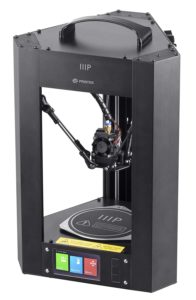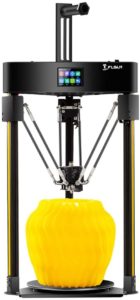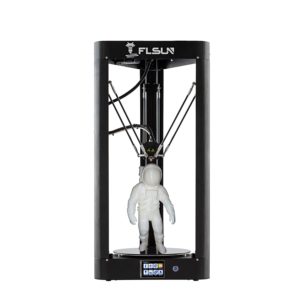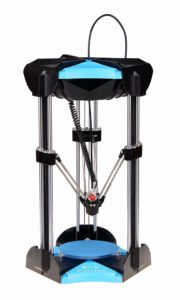Best Delta 3D Printer 2024: Fast 3D Printers for Home or Business
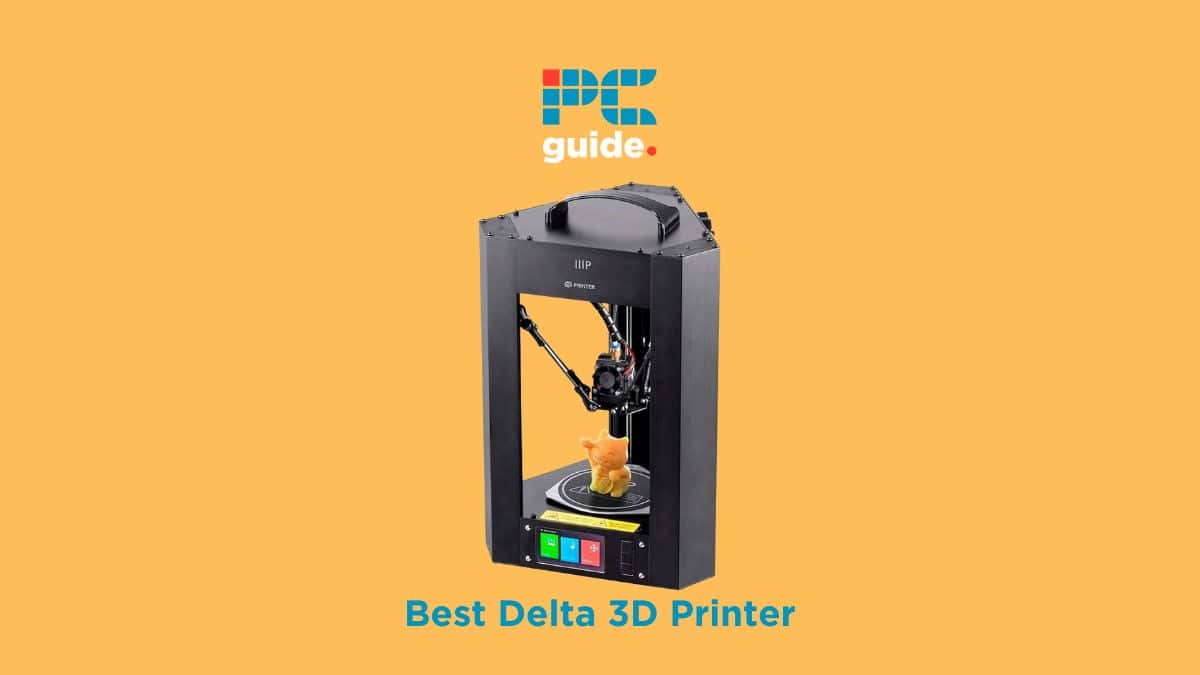
Though less popular than Cartesian 3D printers, the best Delta 3D printers are still worthwhile investments. Prized for their fast print speeds and uniquely vertical design, Delta 3D printers deserve a spotlight as an alternative 3D printing solution. Though the market is less saturated than with other 3D printer variants, there are still plenty of Delta 3D printers to choose from – but which is the best one?
We’ve broken down our selection of the best Delta 3D printer options below, accounting for different budgets and needs, to create a comprehensive buyer’s guide. Whether you’re a beginner looking to experiment with a different form of 3D printing or an accomplished designer wanting to take your designs to new heights, read on for our top picks!
Products at a Glance
How We Picked the Best Delta 3D Printer
Despite having a fundamentally different design, there’s a lot of overlap in terms of what makes the best Delta 3D printer, and what makes the best Cartesian 3D printer. Factors such as build volume, print speed and filament compatibility remain essential, along with the resolution of prints. That said, Delta 3D printers begin to show their advantages when it comes to additional features. Most, if not all, Delta printers are auto-leveling, as it’s too cumbersome to manually level the build plate in such a design. We also gave extra credit to other quality-of-life improvements, such as an easy assembly or automated configurations to help newcomers get started.
We settled on five products, across a range of budgets, that all have their merits as the best Delta 3D printer. Read on to see why we chose each product, and what advantages they have over one another…
Product Reviews
- Affordable price point
- Ships fully assembled
- Auto calibration
- 50 micron resolution
- Wi-Fi, USB, and microSD connectivity
- Print speed
- Small build volume
- Erratic ABS performance
At $160 and stacked to the rafters with features usually reserved for printers twice the price, the Monoprice Delta Mini is nothing short of a steal. Monoprice is known for bringing low-cost but reliable printers to the market. Still, we struggle to understand how the company manages to make the Mini Delta profitable at this price point. In any case, this is all to the benefit of us, the printers.
It’s not perfect – no 3D print is. But for those wanting to toy with a delta printer for the first time without breaking the bank, it’s a top option and one that fully deserves the title of one of the best delta 3D printers out there.
As for features, $160 bags you a sturdy steel frame with an aesthetically pleasing anodized aluminum finish, continuous auto-calibration, a Bowden extruder with nozzle temperatures ranging from 180 to 260-degrees, 50-micron layer resolution, Wi-Fi/USB/microSD connectivity, an LCD screen, and a heated bed. It also ships fully assembled alongside a good selection of extras, including a plastic scraper, a microSD card preloaded with test prints, and a hex wrench.
While delta printers aren’t famed for their amply-sized build volumes, the Monoprice Mini Delta’s Ø110 mm x 120mm build volume falls on the small side even by these standards. Being a delta printer, the Mini Delta has plenty of verticality to play with, but things can get a little cramped on the circular heated print bed. If your printing plans involve modest builds, this shouldn’t be an issue.
Similarly, the Monoprice Mini Delta’s top print speed of 150 mm/sec is fast by FDM 3D printer standards, but among delta printers, it sits firmly in the middle of the pack. Again, this shouldn’t be such an issue given the significantly improved print speeds over traditional 3D printers, and we feel an average speed is entirely appropriate given the low asking price. That said, speed demons may want to look elsewhere, for example, the $3000 Delta Wasp 2040 Pro, which pushes print speeds to 500 mm /sec.
As a final note, official marketing material marks the Monoprice Mini Delta is compatible with PLA and ABS, two of the most popular filament types. In practice, we found that it performs admirably with PLA and even materials like PETG, but mileage varies with ABS. This is partly down to the demanding nature of printing with ABS, notably the need for a heated bed temperature of roughly 110-degrees. The Monoprice Mini Delta’s heated bed maxes out at 60-degrees. For us, it was hit and miss, with awful warping and adhesion issues in some instances and fairly decent prints in others. To err on the side of caution, we recommended viewing the Monoprice Mini Delta as a purely PLA printer.
- Heated bed up to 110-degree
- Auto calibration
- Ø200 mm x 200 mm build volume
- Titan extruder
- Part assembled
- Print speed
- Non open-source firmware
Searching for the best delta 3D printers, we were tempted to bump the FLSUN Q5 up to the top spot but couldn’t quite get over the competitive pricing of the Monoprice Mini Delta. The FLSUN Q5 is a better specced, more versatile machine, and the print quality is more reliable, but it does cost nearly double with an asking price of roughly $300. If you’ve cash to spare, then forego Mini Delta and go all-in on the FLSUN Q5.
The FLSUN Q5 features a 32-bit motherboard, USB/TF card connectivity, a full metal frame, a 27-point auto-calibration system that adjusts in real-time, a power failure resume function, and a full-color TFT touch screen. We particularly like the inclusion of a high-quality Titan extruder, generally reserved for the best FDM hobbyist-grade printers, and a decently sized Ø200 mm x 200 mm build volume with plenty of room for small to medium-sized projects.
The heated bed temperature caps out at 110-degrees, while the extruder temperature can reach 270-degrees. This makes the FLSUN Q5 perfectly suitable for PLA, ABS, HIPS, and TPU prints as advertised. Print quality is right where you’d expect at this price point, although more complex objects don’t come out as clean as we’d like; nevertheless, overall, we’d characterize the printing experience as good.
The FLSUN Q5 also scores points for having TMC2208 silent drivers, although the silent operation is diluted somewhat by a pretty loud fan on the print head and a loud A4988 chip driving the extruder. Although the printer comes part-assembled, the instructions and assembly process are straightforward enough for novices to complete with little to no issues.
Much like the Mini Delta, the FLSUN Q5’s print speeds aren’t a highlight and fall slightly below what you’d expect at this price point, but once again, obliterate those of FDM printers. The FLSUN Q5 can print at speeds ranging from 70 to 120 mm/s. It’s a reasonable trade-off to make for better printing performance.
- Ø260 x 320 build volume
- PLA, ABS, PETG, PVA, HIPS, wood fill, and flexibles compatible
- 100 micron layer resolution
- Lattice coated print bed
- Auto leveling
- Quiet
- Higher price than other options
- Average print speeds
A more decked-out iteration of the FLSUN Q5, the FLSUN Mini makes its way onto our list as one of the most versatile delta 3D printers priced under $500. Much of that versatility rests on a relatively large build volume by delta printer standards – Ø260 x 320 – and supports a much broader range of materials than other delta printers. We love the high degree of accuracy and solid build quality.
The FLSUN Mini capably prints with everything from 3D printing stalwarts ABS and PLA to PETG, flexibles, and wood fill by way of support materials like PVA and HIPS thanks to a heated bed reaching up to 100-degrees and an extruder hot end temperature capping out at 260-degrees.
It also features a high-strength lattice coated print bed heavily inspired by Anycubic’s much-loved Ultrabase, which does wonders to offer firm adhesion for prints and stable temperatures alongside effortless removal of completed prints.
Other specifications include 100 to 400-micron layer resolution, automatic bed leveling, a 3.2-inch TFT color touch screen, power failure resume function, 20 to 150 mm/sec print speed, 32-bit mainboard, and very quiet operational noise levels maxing out at 50 dB.
Combined, all these features deliver good print quality regardless of the material. We were very impressed with the output during our time with the FLSUN Mini, especially considering the easy assembly and setup process. While nippy compared to FDM printers, the print speeds are middling for delta printers, but plenty fast enough to satisfy most transitioning over from traditional hobbyist 3D printers.
Priced at $380, the FLSUN Mini costs quite a bit more than our picks above, but the printer warrants the extra cost for its excellent feature set and printing performance.
- 50 micron layer resolution
- Auto calibration
- 250 mm x 445 mm build volume
- Excellent PLA prints
- Pre-assembled
- Limited to PLA printing
- No on-printer display
- No heated bed
Although Print-Rite is a relative newcomer to the 3D printing scene, they’ve fostered a growing community of fans thanks to excellent, competitively priced machines. One such is the Print-Rite CoLiDo Delta D1315 Plus. Unlike other delta printers that attempt to cover a broad range of materials with varying degrees of success, the Print-Rite CoLiDo Delta D1315 Plus unashamedly targets PLA and PLA only. Such a focus means the printer is designed through and through to deliver excellent PLA prints.
The Print-Rite CoLiDo Delta D1315 Plus features a Ø130 mm x 150 mm build volume, a 50-micron layer resolution, auto-calibration, USB connectivity, and a sturdy lightweight frame. The build volume is neither the largest nor the smallest among our recommendations, hitting a balanced middle ground perfect for small to modestly-sized prints.
The Print-Rite CoLiDo Delta D1315 Plus arrives pre-assembled with minimal setup required to begin printing. The instruction guide is among the better quality ones we’ve come across at this price point, with simple well-guided steps complemented with full-color images. Print-Rite’s Repetier-based slicer works well enough with plenty of advanced settings to tinker with.
The focus on PLA does mean that the Print-Rite CoLiDo Delta D1315 Plus falters when it comes to other filaments, possibly a negative for those that favor versatility. Similarly, the absence of features like an on-printer touch screen controls and a heated bed may put off those accustomed to these quality of life improvements.
Features and Considerations
If you’re considering purchasing a Delta 3D printer not featured on our list, here are some things to factor into your decision:
Build Volume
Unlike Cartesian 3D printers, which print in a cube or cuboid-shaped space, a Delta 3D printer prints with rounded corners to it’s build volume – resulting in a spherical or cylindrical build volume. This is why our measurements of the space in our choices have used the Φ symbol: Phi, which represents rounded volumes. This is an extra consideration on top of the build volume, as it may mean you need to reconsider your design.
Print Speed
Delta printers are generally fast units, but always ensure your choice of 3D printer can keep up. Especially for businesses, time-consuming prints can have serious detrimental impacts on productivity. Make sure that your choice of Delta 3D printer can keep up with you!
Filament Compatibility
There are a range of 3D printer filaments available for use – from olfactory favorites such as PLA to more niche materials like carbon fiber. Depending on your planned build, having the right material is essential. Always double-check with the manufacturer to see what filaments are compatible!
Slicer
3D printers employ software known as a slicer that breaks down a CAD file into data that a 3D printer can read. Whilst most slicers are compatible with most design software, you may want to check that your choice of software is – especially if it’s not a common program such as Blender, AutoCAD or MicroGDS. Similarly, note that you do need 3D modeling software to create your 3D prints, or you’ll be limited to any pre-set models that come with the printer.
Are Cartesian Printers worth it?
Yes: Cartesian 3D printers are the most common model of 3D printer on the market, and there are some tremendous models available for purchase.
What material do 3D printers use?
There’s a variety of materials – also called “filaments” or sometimes “substrates” – that a 3D printer can use. PLA is the common baseline, but other favorites include PETG, ABS, Nylon and even Carbon Fiber!
Our Verdict
Our top recommendation among delta 3D printers is the Monoprice Mini Delta. Newcomers and weathered makers dipping into delta printing for the first time will find plenty to like here, not least a tempting $160 price tag and a slew of excellent features.
Our runner-up recommendation goes to the FLSUN Q5. It’s more expensive than the Monoprice option but is more versatile and stands as a great affordable printer for those with a little more cash to spare.
For pure versatility, including support for a wide range of materials and a good-sized build volume, the FLSUN Mini has the specifications and performance to deliver almost everything you’d ever need from a delta 3D printer.
Lastly, for its pure PLA performance alone, the Print-Rite CoLiDo Delta D1315 Plus is an excellent option for those that want a reasonably priced printer that excels where it matters.
With that, we’ll bring our product guide to the best delta 3D printers to an end. Feel free to drop any questions, comments, or even delta printer suggestions of your own in the comments section below.


